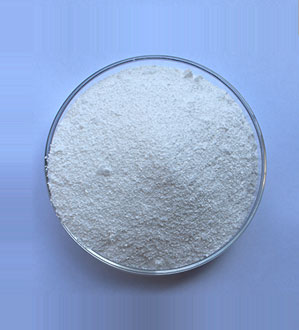
(CH3COO)2Zn
Packing:Grade
Calcium acetate monohydrate has pharmaceutical grade, food grade and industrial grade.
Specification
|
Item |
Pharmaceutical Grade |
Industry Top grade |
|
Content% |
99.0-101.0 |
99.0-102.0 |
|
pH value of 5% solution at 25°C |
6.0-7.0 |
6.0-7.0 |
|
Water insoluble %≦ |
0.005 |
0.005 |
|
Chloride (Cl)%≦ |
0.005 |
0.01 |
|
Sulfate (SO 4 )%≦ |
0.01 |
0.01 |
|
Iron (Fe)%≦ |
|
0.0005 |
|
Lead (Pb)%≦ |
0.002 |
0.005 |
|
Volatile Organic Compounds |
|
Pass the test |
|
Arsenic (As)%≦ |
0.0003 |
0.0003 |
All grades comply with: USP27/Industrial Top grade
Test method
Test details are available upon request.
Packaging
The packaging of anhydrous zinc acetate is a paper-plastic composite bag.
Storage
Zinc acetate anhydrous should be stored in its original packaging or in suitable airtight containers in a dry and clean place. The storage conditions are generally best in places where the temperature changes little and is not easy to be humid. The product is prone to agglomeration when in contact with water or other liquids, and should not be stacked on trays. Under normal handling conditions, zinc acetate will not cause any health hazards. Necessary precautions must be taken to avoid solid or liquid contact with skin or eyes. Under good ventilation conditions, high density exposure to the air should be avoided.
First Aid Measures
Eye Contact: In case of contact with eyes, wash immediately with plenty of water, keep eyes open if necessary, seek medical attention.
Skin Contact: Wash contaminated clothing with water and wash clothing before wearing next time.
Ingestion: Rinse mouth with water, seek medical attention.
Fire risk
Anhydrous zinc acetate will not produce fire risk.
Application
It is used in the field of medicine, buffer agent in photosensitive photography industry, and animal feed additive to improve milk production rate. It can also be used in the printing and dyeing industry, polymerization catalyst, polymer stabilizer, flavoring agent, and the production of carboxyl oxime for hydrometallurgy.
Physiological properties
Contact of solid or liquid with eyes may cause irritation and sensitization. Repeated skin contact may cause slight pain. Smoking a lot can lead to nostrils, throat and upper respiratory tract infection.